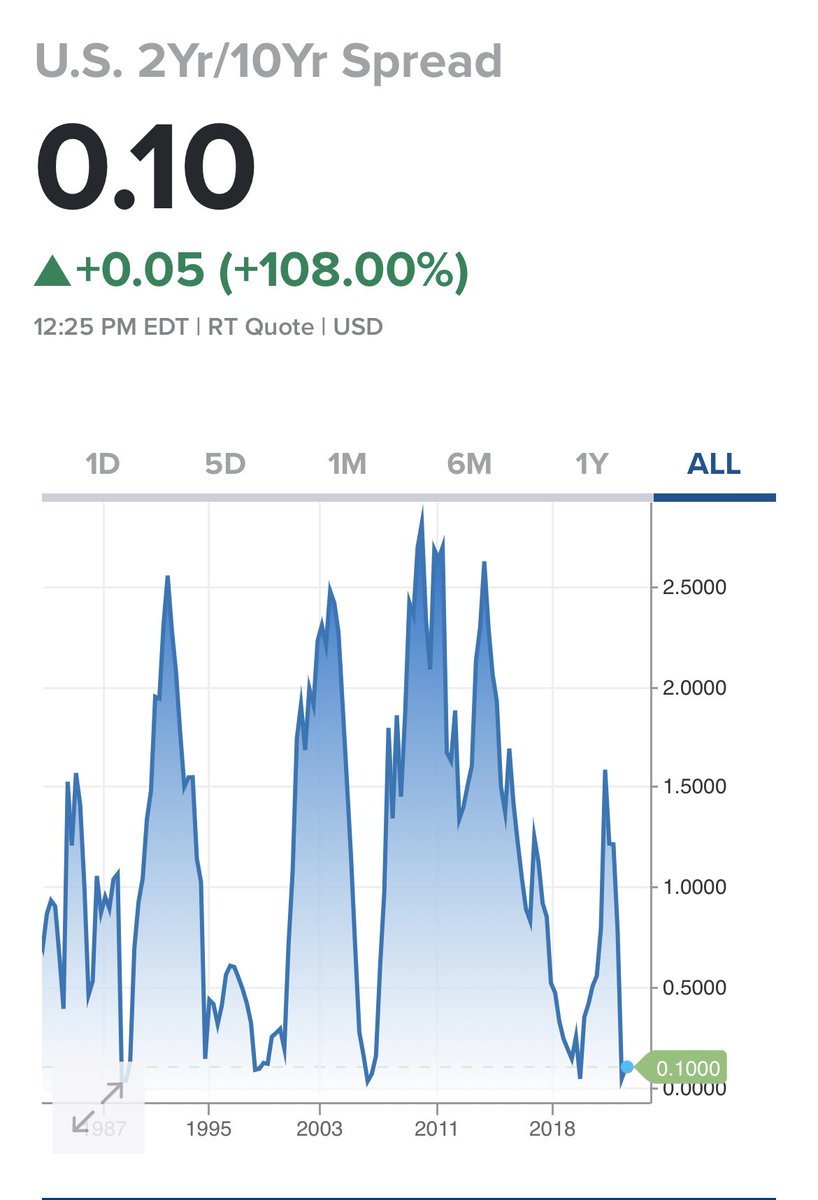
The U.S. Treasury yield spread is the difference between the Fed's short-term borrowing rate and the rate on longer-term U.S. Treasury notes.
2/14
2/14
The width of the yield spread helps to predict the state of the economy over the course of the next year.
Investors analyze the shape of the yield curve and the changes to its shape to gain a sense of economic expectations.
3/14
Investors analyze the shape of the yield curve and the changes to its shape to gain a sense of economic expectations.
3/14
One of the most popular ways to measure these changes is to compare the yields on the 2-year and 10-year Treasury notes.
4/14
4/14
Usually, the longer the loan, the higher the interest rate. For this reason, you'd expect it to be cheaper to purchase short-term bonds than long-term bonds; you'll likely see a bigger return.
5/14
5/14
This is not always fact, but as a concept, it can be used as a metric for many other factors that affect the economy, such as investor confidence.
6/14
6/14
The width of the yield spread between the two helps to predict whether the economy might suffer a recession, or whether it might head towards a recovery, over the course of the next 12 months.
7/14
7/14
The spread between the yields on the 2-year and 10-year U.S. Treasury notes, for example, is an important gauge regarding the current "shape" of the yield curve.
8/14
8/14
The yield curve is a graph with plotted points that stand for the yields over a given time on bonds of varying lengths. These are mostly bonds that can mature in as little as three months or as long as 30 years.
9/14
9/14
The yield curve steepens when the market foresees certain trends. These include stronger growth, higher inflation, & an increase in interest rates by the Federal Reserve. "Steepening" means that the yields on longer-term bonds rise more than the yields on short-term bonds.
10/14
10/14
On the other hand, when investors expect weaker or slower growth, a lower rate of inflation, and lower interest rates from the Fed, the yield curve often flattens. In this case, the yields on long-term bonds fall more than the yields on short-term issues.
11/14
11/14
The yield curve trended downward through December 2018, in keeping with an ongoing downward trend that started in 2014. The December 2018 spread of .21% reached a level not seen since the 2008 recession.
12/14
12/14
In early 2019 there was an ever so slight inversion, but this was followed by a steady rise through 2020 and into 2021. The curve turned downward in April, 2021 and threatened to invert in March 2022.
13/14
13/14
It is not a timing signal per se, as the curve can remain inverted for quite some time before a recession occurs. Occasionally, it can prove wrong
The proximate cause for the inversion was a speech on March 21 where Powell sounded more hawkish than he had previously talked of.
Today FOMC minutes if more hawkish can again spook the bond market.
Which Yield Curve Matters?
Last week, the market was focused on the disparity between the yield on the 2Y & 10Y Tnote. That makes sense, as traders have a short-term horizon. Monday morning, the yield on the 2-year was 2.44%, while the 10-year was 2.391% – a slight inversion.
Last week, the market was focused on the disparity between the yield on the 2Y & 10Y Tnote. That makes sense, as traders have a short-term horizon. Monday morning, the yield on the 2-year was 2.44%, while the 10-year was 2.391% – a slight inversion.
But others and, notably, the Fed tend to pay attention to other yields, those of the 3-month and 10-year Treasuries, for example. Right now, the yield on the 3-month is 0.533, well below the 10-year’s 2.391 – no inversion there.
Their is no holy grail when it comes to analysis of bond yields but when you follow it over a long term, toy will get an idea of how to use it a metric in your trading decisions.
Hope you enjoyed this thread. Please retweet if you did.
@SahilKapoor does a better job about explaining it in detail.
Getting time read this. Much better than what I wrote.
https://twitter.com/sahilkapoor/status/1511573503904219136?s=21
Getting time read this. Much better than what I wrote.
• • •
Missing some Tweet in this thread? You can try to
force a refresh




